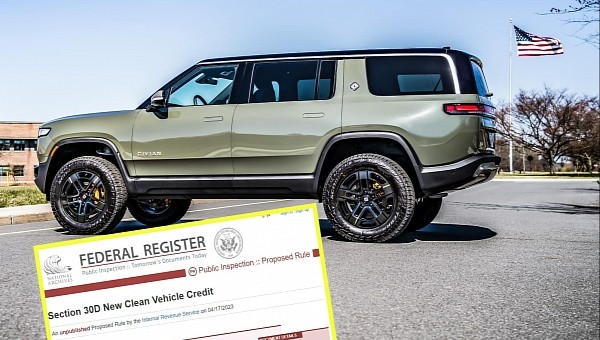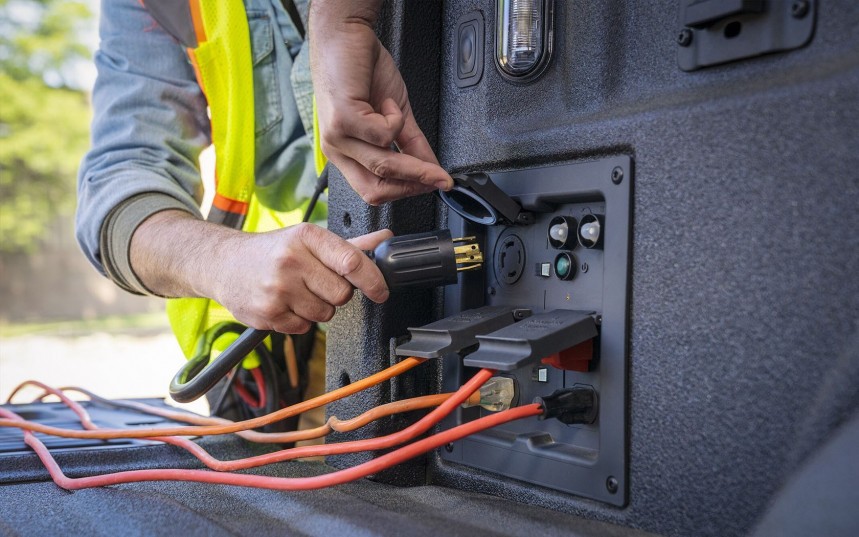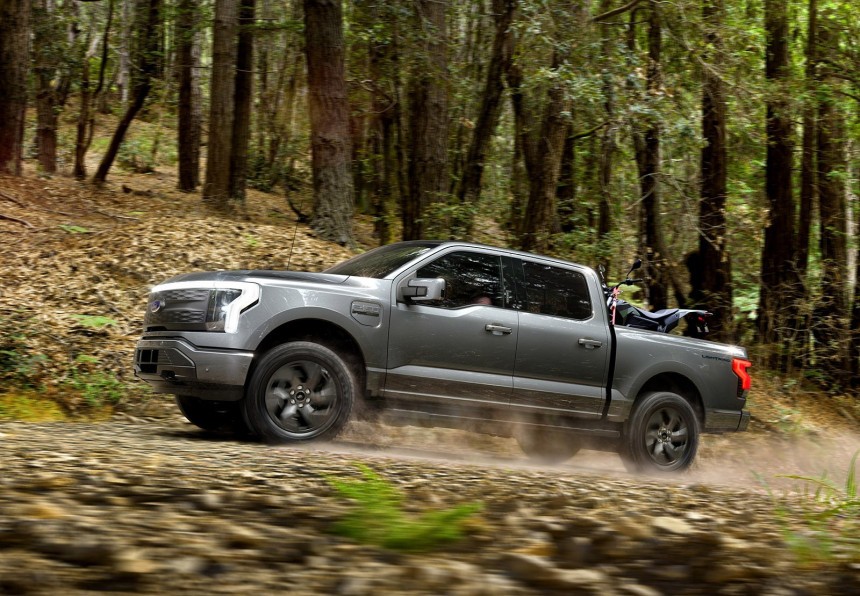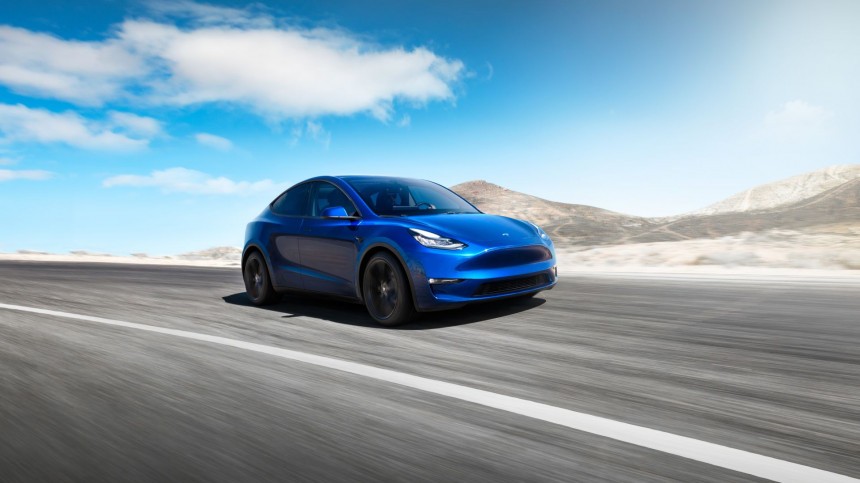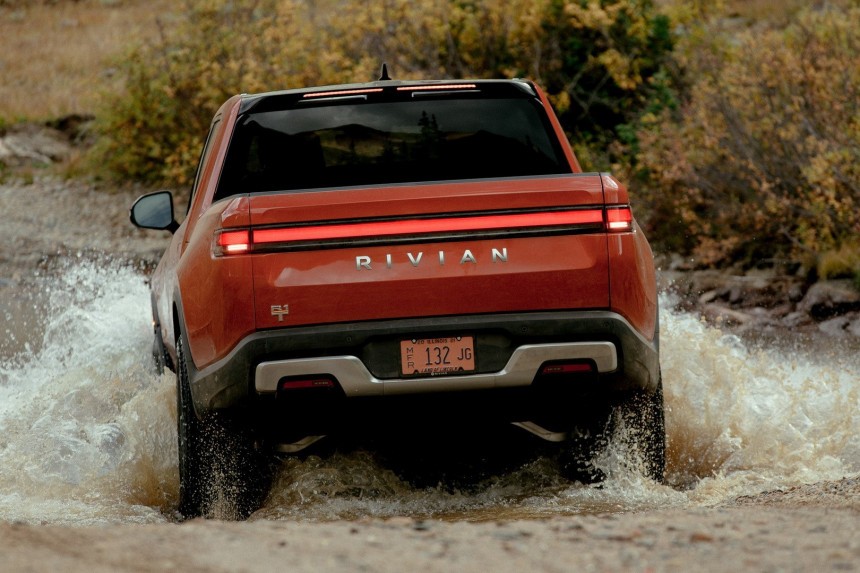Americans who ordered, bought, leased, are about to take delivery of an electric vehicle (EV), or have already done so were anxious to find out if they can access the whole $7,500 included in the updated clean vehicle credit (better known as the EV tax credit). Now, the Treasury has finally published its guidance, named the “Critical Minerals and Battery Components Requirements.”
First thing first, remember when we told you that you should hurry up and order an EV as soon as possible? It wasn't for nothing! But don’t worry if you are scheduled to take delivery (or place in service) of an EV tax credit-eligible vehicle in the first half of April. The Treasury’s new rules apply from April 18 onwards. You have until the last minute of April 17 to get in your new all-electric car that can help you shave off $7,500 of your taxes owed to the federal government in 2024.
“The Critical Minerals and Battery Components Requirements apply to vehicles placed in service after April 17, 2023, the date of publication in the Federal Register,” says the document uploaded on the Federal Register’s official website.
Secondly, the comprehensive document already attracted criticism from a notorious lawmaker who wanted the Inflation Reduction Act (IRA) to be the law that reindustrializes America. Joe Manchin is the Chairman of the Senate Energy and Natural Resources Committee and said “the guidance released by the Department of the Treasury completely ignores the intent of the Inflation Reduction Act.”
Manchin believes the new rules are not strict enough and may allow some of America’s manufacturers set up shop in different countries. Still, it's worth noting that the IRA has already attracted hundreds of billions of dollars in investments just from the automotive industry. Moreover, according to the Environmental Defense Fund, over 143,000 new jobs have already been created.
The institution also clarified the MSRP debate and decided that it represents the sum of the retail price of the automobile suggested by the manufacturer and the “retail delivered price suggested by the manufacturer for each accessory or item of optional equipment, physically attached to such automobile at the time of its delivery to the dealer.”
Fourthly, the guidance is in accordance with the section 30D(e)(1)(A) of the Internal Revenue Code and says that the percentage of the critical mineral extracted or processed in the United States or in any country with which the United States has a free trade agreement in effect must be:
This percentage is established by dividing the total value of qualifying critical minerals by the total value of critical minerals.
Fifthly, besides having percentage rules for the minerals found in batteries that qualify an electric vehicle (be it PHEV or EV) for the clean vehicle credit, manufacturers must also make sure that the energy storage units are manufactured or assembled (combining battery components into battery cells and battery modules) in the U.S., Canada, or Mexico in a percentage of:
The qualifying battery component content is determined by dividing the total incremental value of North American battery components by the total incremental value of battery components.
The minimum requirements for the critical minerals and the manufacturing or assembling rules will have to be certified by automakers.
Sixthly, the Treasury says that clean vehicles for which the EV tax credit was obtained under the previous rules are not eligible for the updated clean vehicle credit. The list of vehicles that qualify for the new credit is provided by the Internal Revenue Service and contains the details you might want to know.
Eighthly, it's possible that after April 17, fewer EVs will qualify for the clean vehicle credit. That's because of the new abovementioned rules regarding the sourcing of battery materials and critical minerals coming from countries like China. But these chemical compounds can come from Japan, Canada, Australia, Mexico, Colombia, Peru, Panama, Oman, Nicaragua, Singapore, or Korea. The list can be expanded, so there's some hope left for manufacturers which have partners or subsidiaries working in other places on Earth.
Besides that, the price of the qualifying car (like a Tesla Model 3) is capped at $55,000, while for an SUV, pickup truck, or van (Rivian R1S/Ford F-150 Lightning) the MSRP limit is set at $80,000.
Applicants also have income limitations that they must be aware of. These are, as follows:
Finally, the Treasury’s guidance includes a 60-day comment period that allows every American to chip in with their opinion. If you think the rules should have been stricter or more lenient, make sure to tell the officials just that in writing. It’s possible that some changes might be made, if public consensus is strong on a certain topic. But don’t get your hopes up.
“The Critical Minerals and Battery Components Requirements apply to vehicles placed in service after April 17, 2023, the date of publication in the Federal Register,” says the document uploaded on the Federal Register’s official website.
Secondly, the comprehensive document already attracted criticism from a notorious lawmaker who wanted the Inflation Reduction Act (IRA) to be the law that reindustrializes America. Joe Manchin is the Chairman of the Senate Energy and Natural Resources Committee and said “the guidance released by the Department of the Treasury completely ignores the intent of the Inflation Reduction Act.”
It's time for some clarifications
Thirdly, the Treasury established that “final assembly” refers to the process by which a manufacturer “produces a new clean vehicle at, or through the use of, a plant, factory, or other place from which the vehicle is delivered to a dealer or importer with all component parts necessary for the mechanical operation of the vehicle included with the vehicle, whether or not the component parts are permanently installed in or on the vehicle.” This is identifiable by looking at the Vehicle Identification Number (VIN) or the Monroney label.The institution also clarified the MSRP debate and decided that it represents the sum of the retail price of the automobile suggested by the manufacturer and the “retail delivered price suggested by the manufacturer for each accessory or item of optional equipment, physically attached to such automobile at the time of its delivery to the dealer.”
Fourthly, the guidance is in accordance with the section 30D(e)(1)(A) of the Internal Revenue Code and says that the percentage of the critical mineral extracted or processed in the United States or in any country with which the United States has a free trade agreement in effect must be:
- 40% for clean vehicles placed in service after April 17, 2023, and before January 1, 2024;
- 50% for clean vehicles placed in service during the calendar year 2024;
- 60% for clean vehicles placed in service during the calendar year 2025;
- 70% for clean vehicles placed in service during the calendar year 2026;
- 80% for clean vehicles placed in service after December 31, 2026.
Minerals and battery manufacturing
According to the revised Internal Revenue Code (IRC), the critical minerals are:- aluminum with a minimum purity of 99%;
- antimony with a minimum purity of 90%;
- barite with a minimum purity of 80%;
- beryllium with a minimum purity of 99% (or converted to copper-beryllium master alloy);
- cerium with a minimum purity of 99%;
- cesium with a minimum purity of 99%;
- chromium with a minimum purity of 60% when converted to ferrochromium or 99% by itself;
- cobalt with a minimum purity of 99.6%;
- dysprosium with a minimum purity of 99%;
- europium with a minimum purity of 99%;
- fluorspar with a minimum purity of 97%;
- gadolinium with a minimum purity of 99.9%;
- germanium with a minimum purity of 99.99%;
- graphite with a minimum purity of 99.9%;
- indium with a minimum purity of 99.9%;
- lithium with a minimum purity of 99.9% or converted to lithium carbonate or lithium hydroxide;
- manganese with a minimum purity of 99.7%;
- neodymium with a minimum purity of 99.5%;
- nickel with a minimum purity of 99%;
- niobium with a minimum purity of 99%;
- tellurium with a minimum purity of 99%;
- tin with a minimum purity of 99.99%;
- tungsten which is converted to ammonium paratungstate or ferrotungsten;
- vanadium which is converted to ferrovanadium or vanadium pentoxide;
- yttrium with a minimum purity of 99.99%;
- and others that must have a minimum purity of 99% like arsenic, bismuth, gallium, iridium, magnesium, palladium, platinum, rhodium, rubidium, titanium, zinc, and zirconium.
Fifthly, besides having percentage rules for the minerals found in batteries that qualify an electric vehicle (be it PHEV or EV) for the clean vehicle credit, manufacturers must also make sure that the energy storage units are manufactured or assembled (combining battery components into battery cells and battery modules) in the U.S., Canada, or Mexico in a percentage of:
- 50% for clean vehicles placed in service after April 17, 2023 and before January 1, 2024;
- 60% for clean vehicles placed in service during the calendar year 2024 or 2025;
- 70% for clean vehicles placed in service during the calendar year 2026;
- 80% for clean vehicles placed in service during the calendar year 2027;
- 90% for clean vehicles placed in service during the calendar year 2028;
- 100% for clean vehicles placed in service after December 31, 2028.
The qualifying battery component content is determined by dividing the total incremental value of North American battery components by the total incremental value of battery components.
Sixthly, the Treasury says that clean vehicles for which the EV tax credit was obtained under the previous rules are not eligible for the updated clean vehicle credit. The list of vehicles that qualify for the new credit is provided by the Internal Revenue Service and contains the details you might want to know.
A couple of things to remember
Seventhly, the clean vehicle credit cannot be claimed by both spouses, if their names are on the title. The amount of the credit attributable to a new clean vehicle may be claimed on only one tax return.Eighthly, it's possible that after April 17, fewer EVs will qualify for the clean vehicle credit. That's because of the new abovementioned rules regarding the sourcing of battery materials and critical minerals coming from countries like China. But these chemical compounds can come from Japan, Canada, Australia, Mexico, Colombia, Peru, Panama, Oman, Nicaragua, Singapore, or Korea. The list can be expanded, so there's some hope left for manufacturers which have partners or subsidiaries working in other places on Earth.
Applicants also have income limitations that they must be aware of. These are, as follows:
- $150,000 if single;
- $225,000 if the applicant is the head of a household;
- $300,000 if filing jointly
Finally, the Treasury’s guidance includes a 60-day comment period that allows every American to chip in with their opinion. If you think the rules should have been stricter or more lenient, make sure to tell the officials just that in writing. It’s possible that some changes might be made, if public consensus is strong on a certain topic. But don’t get your hopes up.
